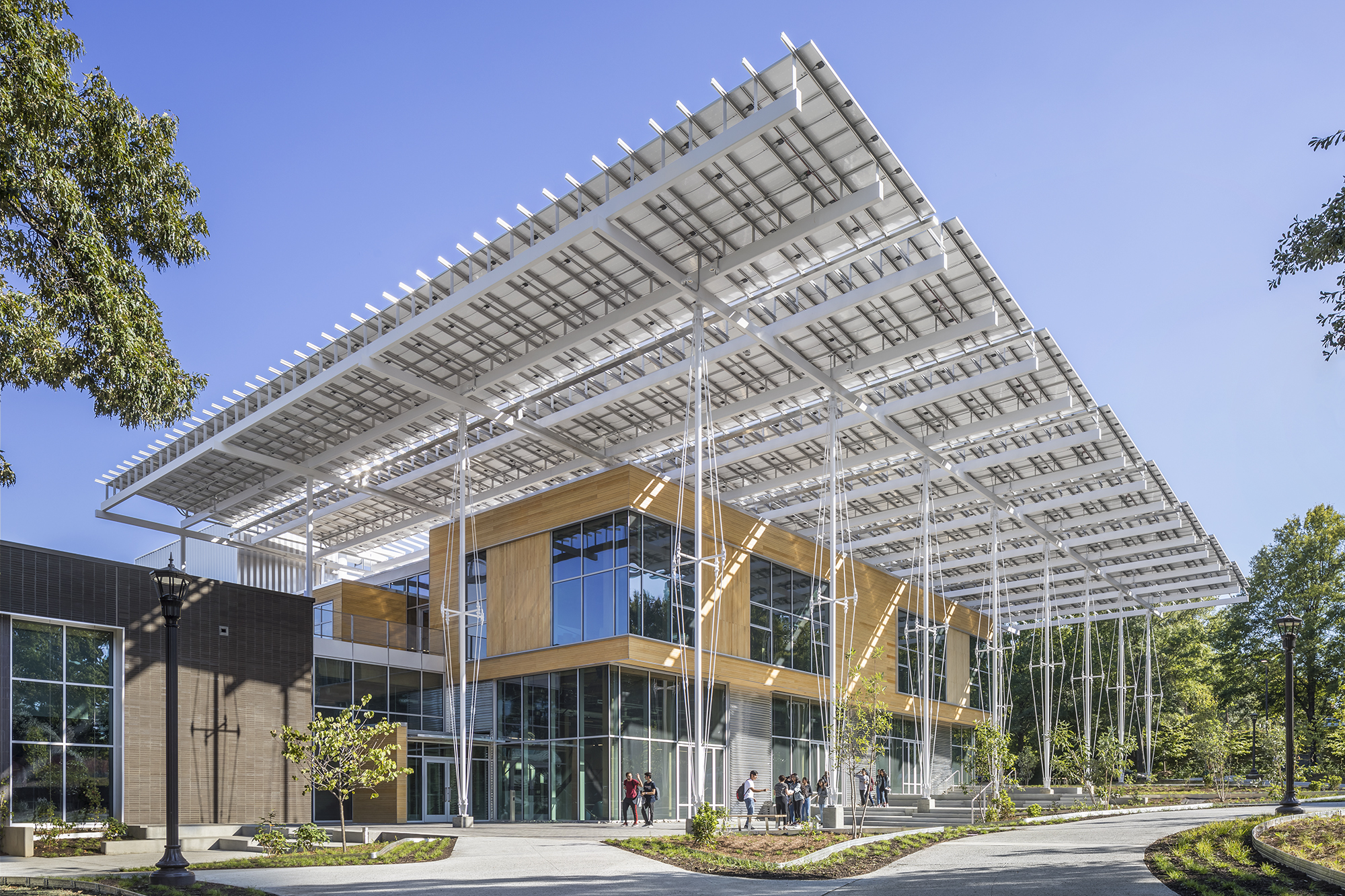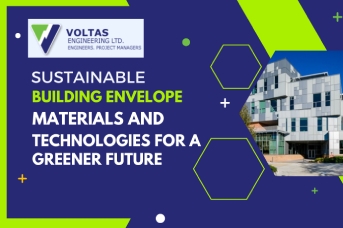A barrier protecting the building’s interior from the exterior elements!
Do you know how much a poorly constructed building could cost you in the long run?
You may not be aware of it, so let this article clear up all your concerns. While reading, you will find numerous sustainable and eco-friendly solutions to your building envelope problems.
As concerns about the environment and sustainability grow, building envelope consultants are highly focused on sustainable construction materials and technologies to create greener, more energy-efficient structures.

Now you might wonder what the building envelope does
A building envelope serves as a protective shell that ensures that moisture, air, and other elements do not enter the confines of a building.
It essentially stops interior moisture intrusion caused by rain, snow, or water freezing and expanding within the joints of the construction, which alters the building’s structural soundness and stability.
Whereas, a sustainable building envelope, broadly speaking, involves preventing the depletion of raw materials, energy, and water resources to stop environmental deterioration brought on by the operational needs of buildings and their infrastructure during their life cycle. It’s a challenging endeavour that has long-term advantages for the apartment complex as a whole.
Below are the top sustainable and green building materials that should be used in construction. By implementing these elements and practices into the design and construction of a building envelope, it is possible to create a more sustainable and energy-efficient structure, reducing its environmental footprint and providing long-term benefits for both the occupants and the surrounding ecosystem.
Cork
Cork grows incredibly quickly, much like bamboo does. Cork is a strong, flexible material that can return to its original shape even after sustained pressure. It is a typical component in floor tiles due to its tenacity and wear resistance.
Recycled Plastic
Concrete is being produced by manufacturers utilizing recycled plastic and other ground-up waste rather than sourcing, mining, and milling new components for building. Instead of filling landfills and adding to plastic pollution, the approach lowers greenhouse gas emissions and finds a new market for waste plastic.
Recycled Steel
Steel can be utilized in place of various unrecycled elements during the framing process to increase a structure’s resistance to earthquakes and strong winds. Steel is entirely recyclable, which greatly lessens the environmental impact of the new building.
Straw Bales
It is another environmentally friendly building material that may be utilized for framing. They can serve as soundproofing materials and have strong insulation qualities. It can also be used as fill material between columns and in beam frameworks because it does not permit air to pass through, which may have some features that make it fire-resistant.
Reclaimed Wood
One of the most eco-friendly ways to save trees and reduce the amount of lumber in landfills is to use recycled wood. Reclaimed wood is available in salvage yards, shipping crates, pallets, excavating businesses, renovated homes, and retired barns.
Precast Concrete Slabs
Precast concrete slabs can endure a variety of weather conditions, making them ideal for walls and building facades. Some slabs can also be used for floors and flat roofs. Concrete is a cost-effective building material and a great technique to manage heat inside a structure. Precast concrete slabs are more environmentally friendly than many typical concrete choices since they frequently require less energy to make and build.
Bamboo
One of the most environmentally friendly building materials is bamboo. It has an astonishingly rapid rate of self-generation; some have reportedly grown up to three feet in just 24 hours.
It is extremely durable, has a high strength-to-weight ratio, and has even more overall strength than brick and concrete. Therefore, it is the ideal option for both flooring and cabinetry.
Insulation Materials
Traditional insulation materials like fibreglass and foam are effective for reducing heat transfer, but they can be harmful to the environment and human health.
Sustainable insulation materials like recycled cellulose, denim, and wool are becoming increasingly popular because they are made from renewable resources and have a much lower environmental impact.
Green Roofs
A “green roof” is a roof that is covered in vegetation, which helps to reduce heat absorption and improve air quality. Green roofs are becoming increasingly popular in urban areas because they provide additional green space and help reduce the urban heat island effect.
High-Performance Windows
Windows are a crucial part of a building’s envelope, but traditional windows can be a major source of heat loss and energy waste. High-performance windows, made from materials such as insulated glass, low-emissivity coatings, and gas-filled cavities, can dramatically improve a building’s energy efficiency while still allowing natural light to enter.
Solar Panels
Solar panels are a popular way to generate clean energy and reduce a building’s reliance on traditional energy sources. Solar panels can be installed on roofs or walls, and these can be integrated into the building’s design to create a seamless, aesthetically pleasing look.
Weatherproofing and Air Sealing
An airtight envelope helps prevent air leakage and infiltration, minimizing energy loss and improving indoor air quality. Proper weatherproofing measures, including sealing gaps, using vapour barriers, and installing air barriers, enhance the overall performance of the building envelope.
Advanced Building Envelope Systems
Advanced building envelopes systems like prefabricated panels, modular construction, and passive house design can all help reduce a building’s environmental impact. These systems are designed to be highly efficient and can be customised to meet the specific needs of a building and its occupants.
Water Management
Implementing effective water management systems, such as rainwater harvesting, or permeable surfaces, can help reduce water consumption and alleviate the strain on local water resources.
By incorporating these sustainable building envelope technologies into their designs, architects, and builders can create greener, more energy-efficient structures that are better for the environment and the people who live and work in them. As the demand for sustainable building practices continues to grow, we building envelope consultants can expect to see even more innovative materials and technologies emerge in the years to come.
Who Are We?
Voltas Engineering, the best building envelope company in Vancouver, assists architects and builders in effectively completing their projects. Throughout construction, we offer specs and information for numerous building components. For each project, our team focuses on creating high-calibre blueprints that have been carefully thought through. Since we are a true one-stop company, we address problems everywhere! For any of your building envelope requirements, get in touch with us anytime.


